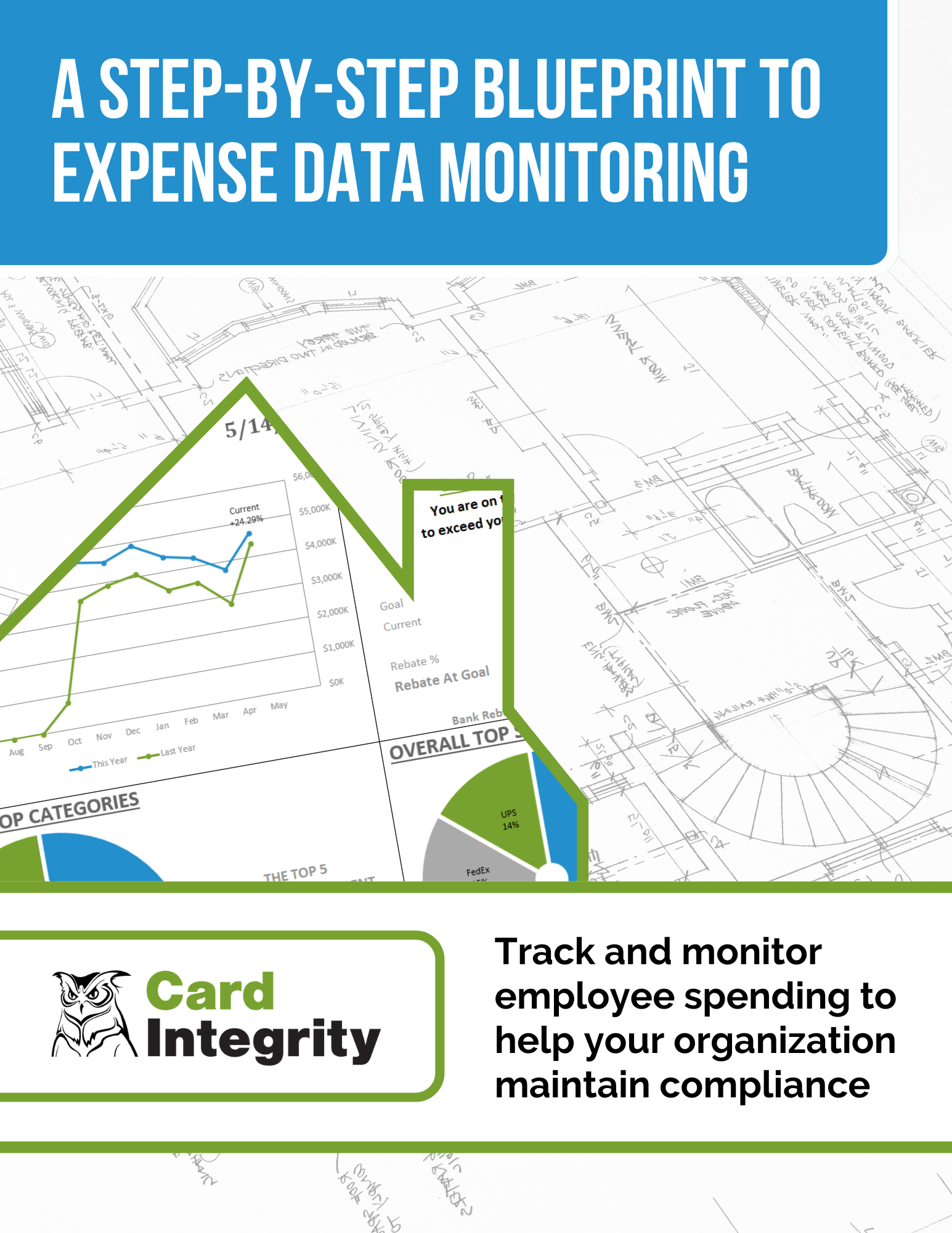In our article “Five Ways Your Company Might Be Overspending,” we introduced our five-part series on identifying and ending overspending. In this article, we go over the last of the five ways: Lacking proper visibility and control of spend.
How it begins
It’s easy to become unenthusiastic about expense reviews, especially if there’s an assumption within a company that the system is somehow overseeing itself.
Purchasing cards (also known as P-Cards) are typically acquired by a business in large part because the transactions tied to them can be so easily tracked. In the same way, travel cards (also known as T&E cards) are acquired to simplify and streamline the process of But they still need to be tracked. The belief that this will take place by itself with no one behind the proverbial wheel is misguided.
Reviewing card transactions is a job that needs to be specifically assigned. If not, it’s easy for an employee to say “That’s not my main job function,” or “I’m too busy with things that affect me more directly.” These statements might not be false excuses. It’s very likely that no one has officially been given the task to do. And, if someone has been assigned, it’s just as possible that there’s no room for the added responsibility in that person’s routine.
Of course, if thorough card review is made difficult, it’s less apt to happen. A company might be using archaic expense policies and procedures in the first place, that don’t even allow for any decent visibility of transactions.
What it looks like
On a personal level, can you imagine what your checking account would look like if you never checked your balance? When you consider the answer to that question, it’s pretty easy to appreciate, then, the chaos a company’s expense system would experience from a lack of visibility.
Without transparency and proper review, an expense system can easily become fraught with fraud, misuse, and abuse.
These three will cause your business to waste money needlessly. ACFE reports the following in their 2024 Report to the Nations:
- Median loss per fraud case: $145,000
- Average loss per case: $1.7 million
- 84% of fraudsters displayed at least one behavioral red flag
Sadly, without ways to see what’s actually happening, the fact that money is being lost probably won’t be noticed for a long time. According to the same 2024 Report to the Nations, it takes at least 12 months on average to detect occupational fraud. When management finally realizes what’s happening, it might be too late to recoup what’s been lost, and it will be very difficult to pinpoint the causes.
How to stop the overspend
There are four major steps that need to be taken:
- Your company first needs to adopt an expense system that adequately allows for the most visibility and transparency possible. This might mean abandoning older ways of doing things, and adopting new programs, such as a P-Card system. The goal is to make visibility as easy as possible to achieve — and achieve well.
- Policies and procedures on how to handle and oversee that system need to be created and set into motion.
- All parties involved need to be educated on what those new policies and procedures are and what their new roles will be in the system.
- Review tasks must be realistically assigned and must actually take place.
Card Integrity can aid your company with training on the correct policies and procedures that will help avoid the overspending. And then, it can go to the next step of notifying your employees or managers, so that everyone involved exactly knows what’s going on and how to perform his or her newly assigned tasks.
If, as mentioned earlier, the reasons these steps aren’t being taken are due to limitations with your resources, it might be necessary to completely hand the responsibility of visibility and review to Card Integrity — a company that:
A) has the experience and skills to do reviews properly to catch overspending and its sources, and;
B) has the proper bandwidth to perform these tasks and ensure that they will actually get done.
When it comes to overspending, knowledge truly is power.
There’s an old saying: Watch the pennies, and the dollars will take care of themselves. It’s important to stay on top of all of your company’s expenditures. It’s the only way to know that overspend exists and come up with ways to combat it. Improving your organizational transaction review process can go a long way to save money and spend it more efficiently. But if your company doesn’t have the resources to provide that review, Card Integrity can help.
Check out our latest eGuide: A Step-by-Step Blueprint to Expense Data Monitoring for a list of best practices and suggestions on how to build out your card program either from the ground up, or to fortify it if it needs help in certain areas.
Article originally published February 4, 2020. Updated August 25, 2025 with updated resources and information.




